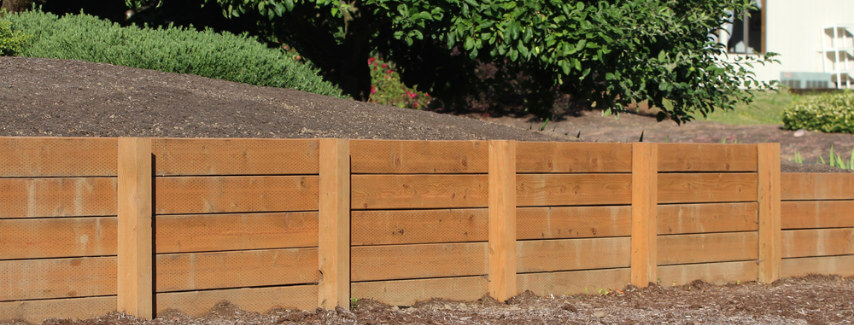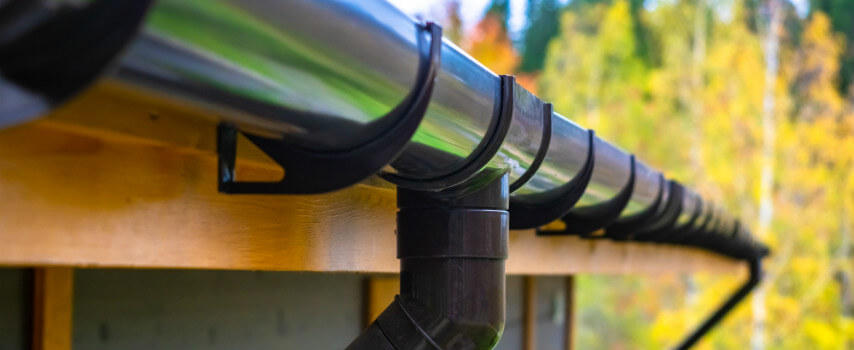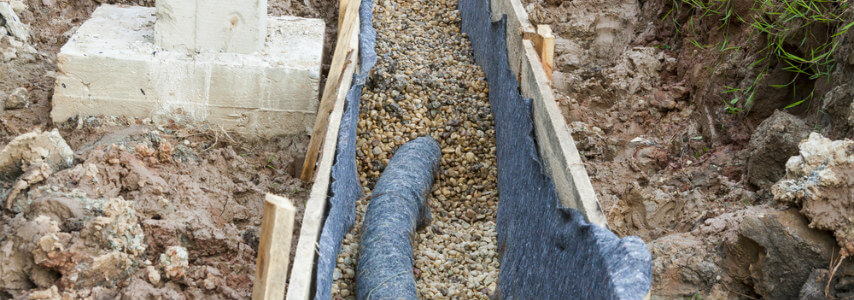Topsoil erosion is a significant problem faced in both commercial and domestic settings. This undesirable condition occurs when the upper layer of soil is exposed due to removal of trees, plants and other organic/non-organic substances which hold the topsoil in place.
With prolonged heavy rains, water leaks, and/or poor drainage, this unprotected layer of soil will be washed away.
Effects of Foundation Erosion
Loosening of the topsoil can have dire consequences on residential and commercial building structures.
Soil erosion can cause significant damage to the foundations of private and commercial properties. Loss of the protective topsoil around these structures will result in defects beneath their foundations thereby diminishing structural integrity.
Observable effects of foundation erosion include:
- Tilt/lean in building
- Wall buckling
- Undulating floors
- Complete foundation disruption
Heavy, non-stop rainfall saturates the soil to its maximum water content. Once this happens water is no longer absorbed into the soil strata and stays on the surface. If you have proper drainage, this shouldn’t be a problem because water will flow into ditches and other infrastructure assets. If you have poor drainage the water will pond. Ponding is an aesthetic problem unless you get ponding against your foundation.
Ponding against your foundation can negatively affect the soil structure along the perimeter of your home and could lead to foundation problems as well as wood rot and cosmetic issues. Ponding water is bad for your foundation because it weakens the soil that supports your foundation. The soil below your foundation was prepared for even weight distribution. Ponding and oversaturated soil disrupt this harmony.
In extreme cases, water could get below your grade beam and start to affect the interior areas of your foundation. It’s very hard for the soil beneath your home to dry-out because it isn’t receiving sunlight. In addition, water pockets do become stagnant and odorous.
Knowing that water drains isn’t enough, it’s important to know the path that water drains. If water is draining along your foundation it can erode the soil. Continued erosion creates voids and more space for the water to occupy. Typically this is a problem around un-vegetated areas because root structures are able to hold soil in place. In extreme cases, water flow can create pathways underneath foundations, driveways, and sidewalks.
7 Ways to Prevent Soil Erosion under House Foundations
The damaging effects of topsoil erosion can be limited by following preventive steps. These relatively simple measures will significantly improve erosion control around house foundations and reduce the rate of soil loss.
1. Establish Biological and Non-Biological Erosion Control Measures
An effective method of tackling foundation erosion problems is by utilizing biological and non-biological agents to improve the integrity of foundation soil.
Planting grasses and flowers around a building’s foundation will drastically reduce soil loss as their roots will help to anchor it in place. As an added benefit, well-planned flower beds will lend an aesthetically pleasing view to property surroundings. It is important to note that trees should not be planted close to building foundations as their roots will cause more harm than good in the long term.
For cases where horticultural planting methods are not ideal, concrete paving and gravel coverage can help. These are equally effective means of preventing house foundation erosion.
2. Installation of Downspouts and Gutters
Properly installed gutters and downspouts will effectively channel rainwater away from building foundations, thereby minimizing erosion under concrete slab foundations.
Recommendations for installing downspouts state that they should channel water 5 to 10 feet from the base of the building. This measurement can vary slightly according to the soil type surrounding the building structure.
3. Foundation Grading Checks
To improve rainwater drainage away from building foundations, it is essential that the ground around the structure is properly sloped. A flat level ground or inverted slop will cause water to pool around the building foundation and initiate erosion damage. Experts recommend a ground slant of 3% to 5% for the first 10 feet surrounding your house or commercial building.
4. Retaining Barriers
Protective barriers can be installed at the bottom of building slopes which will minimize the movement of soil. These barrier walls will serve to maintain the slope and prevent topsoil erosion even with heavy rainfall and water runoffs.
A modification of the retaining barriers is stepped terraces where a series of retaining walls are installed at intervals on the foundation slope. Other viable options are the use of slanting swales.
5. French Drains
Another key recommendation on how to stop erosion around house foundations is the installation and use of French drains. These are trenches housing perforated pipes surrounded with gravel. The system works by redirecting water seeping through gravel away from structure foundations thereby reducing soil erosion.
6. Meshes, Piles, and Nets
In cases where the topsoil is extremely loose and difficult to manage with other measures, the use of protective barriers and covers are the next viable option.
There are a wide variety of these retaining materials including sprayed concrete holding compounds, piles, rock drapes, and high-tensile steels meshes. These materials should only be installed by licensed professionals to achieve the desired results.
7. Constant Drainage Monitoring
It is not enough to simply install drains, gutters or downspouts around building foundations. Routine checks are also required to ensure that they remain fully functional.
Drains can become clogged with debris, dirt or leaves which, if left unchecked, will block outflow channels leading to accumulation of water and undesirable ground settling around foundations.
Foundation Erosion Repair Options
For an already defective foundation, several foundation erosion repair methods can be utilized.
Soil Stabilization
Foundation soil stabilization chemicals can be injected into loose soil to achieve better compaction, fill sub-surface voids and minimize erosion.
Polyurethane Foam Void Filling
With defects beneath concrete foundation slabs, an effective method of repair is polyurethane foam void filling. The filling material is pumped through a small opening leading to the void which is subsequently sealed. This method is fast and effective, achieving instant slab leveling.
Foam Jacking Foundation Repair
This method is utilized when there is a need to achieve lift for a dipping or uneven foundation. Polyurethane foam injections are made into defective sections of your foundation. This chemical compound then expands, filling voids and enabling foundation lift.
Contact URETEK to Fix Erosion under Concrete Slabs
URETEK Gulf Coast is a leading foundation repair company in Houston that provides solutions for both residential and commercial buildings. With our unique lifting polymer, you can experience the most effective fixes to your foundation.
To learn more about our highly effective foundation repair techniques, please contact us online today!





